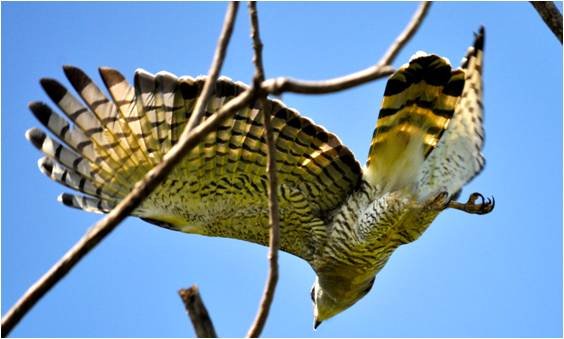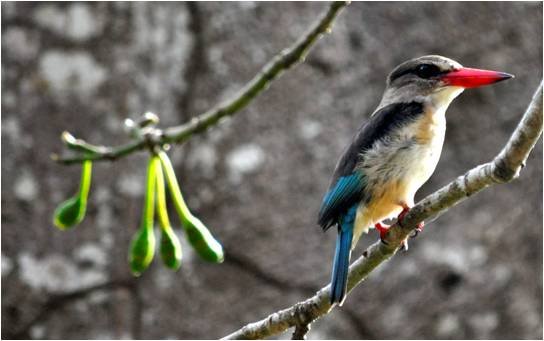By Alice Hawkes | Charitable Trust Team
GVI has been working in the forests around Shimoni, Kenya, under direction of the Kenya Wildlife Service since 2006. Kenya’s coastal regions receives regular rainfall, and are as such, one of the last refuges for the fauna of the ancient rainforest that once stretched from Gabon on Africa’s West Coast through the Congo and Uganda to Kenya thousands of years ago. Shimoni’s forests are part of one of the world’s most threatened 25 global biodiversity hotspots and with continuing forest loss mainly as a result of human encroachment, the research that KWS, GVI and local CBOs undertake becomes more crucial.
Much work had been done on Angolan Black and White Colobus monkey populations over the past years. This species (of which there are no more than 5000 individuals left world-wide) seems to be well able to adapt to changing circumstances. Colobus groups for example seem to readily adapt their diet to include for exotic plants widely used in resort gardens and parks and are just as happy sleeping on a breezy roof-terrace as they are in an endemic baobab tree.
Current efforts focus on avifauna. Bird species diversity, abundance and density are estimated through the use of bird point counts, and continuous surveys of the Shimoni forest area. East Africa represents one of 218 worldwide Endemic Bird Areas, and birds are important components of forest ecosystems as well as indicators of habitat disturbance. Of the bird species that were found by the GVI team in the area, 10 are listed as endemic and many others have a restricted distribution. Additionally, Shimoni Forest is habitat for the critically endangered Spotted Ground Thrush as well as three other threatened species.
In an intensified effort to find species that had never been recorded for the area, the GVI Shimoni forest project team used the transition from short rains to dry time, with the associated food availability and habitat suitability to their advantage and found 10 new birds in one expedition. The new species include the Crested francolin, Brown Noddy, Abyssinian Scimitarbill, Lesser Honeyguide, Greater Crested Tern, Red-bellied Firefinch, Common Greenshank, Eastern Green Tinkerbird, and the Winding Cisticola. Names and photographs of these species will be available with the upcoming publication of GVI’s Kenya newest bird catalogue for the area which will become available throug www.gvikenya.net. Further developments include collaboration with Nature Kenya, the local partner of Birdlife International in setting up a local support group in charge of monitoring bird populations. Ademola Ajagbe regional manager for Birdlife International was quoted saying “Designating the Shimoni forests as IBA (important bird area) has our priority… GVI can be instrumental in setting up the first IBA local support group for a coastal area”.
Project reports on GlobalGiving are posted directly to globalgiving.org by Project Leaders as they are completed, generally every 3-4 months. To protect the integrity of these documents, GlobalGiving does not alter them; therefore you may find some language or formatting issues.
If you donate to this project or have donated to this project, you can receive an email when this project posts a report. You can also subscribe for reports without donating.

